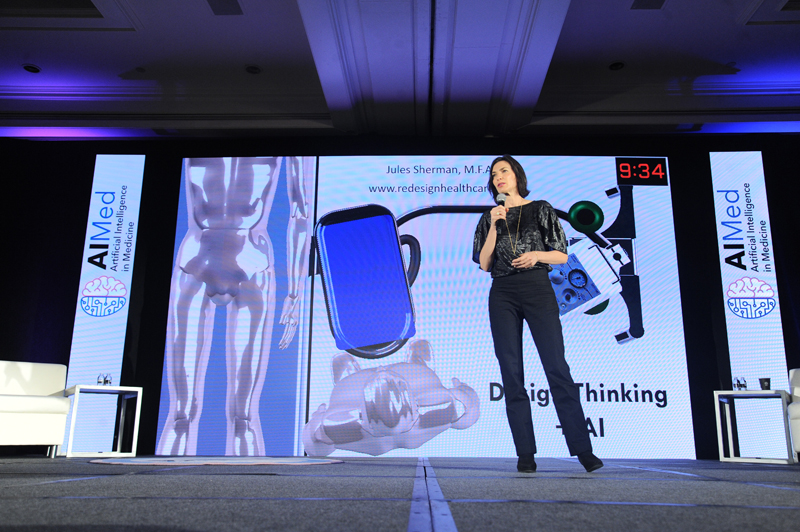About

Delivering a talk about human-centered design in the context of artificial intelligence technology at AIMed 2017.
This site is a tool to capture and display innovation and design in healthcare through classes I co-teach with physicians at Stanford’s d. School (Hasso Plattner Institute of Design).
There is a lot to be gained when interdisciplinary groups of students have structured access to clinicians, the healthcare environment, patients, and each other: fresh perceptions are created, unexpected needs are revealed and insightful solutions can be developed.
In addition, it is a blog to record my thoughts about various healthcare design issues, my work experience, as well as reviews of books or studies I read in this domain. I recently added a “publications” tab as my work has led me to be a co-author and first author on various papers and poster presentations.
In short, redesignhealthcare.org is an attempt at documenting my process as a designer, instructor and researcher.
redesignhealthcare is on instagram too.
My Background:
I was trained as an industrial designer at RISD and then worked as a consumer product designer for 15 years before pursuing my graduate degree at Stanford from 2010-2012. At Stanford I focused on designing health and wellness products such as personal electronic response systems, human lactation support products and toys/applications that promote family communication.
In 2012, I launched “Maternal Life LLC,” a company focused on improving safety and outcomes in labor & delivery through design. My first product, Primo-Lacto®, funded by grants, was acquired by Lansinoh in 2016 after a clinical trial, and FDA clearance.
Besides inventing new products under Maternal Life, I co-teach healthcare design classes with attending physicians at LPCH and works for the Stanford Pediatric Department with an interdisciplinary team focused on improving safety in labor and delivery. My particular interests are human factors during medical procedures, communication between clinicians and patients, and product design solutions that empower patients and healthcare workers.
We encourage our students to learn through observation, hands-on training, prototyping and building relationships with their users. Healthcare product design and the classes we teach are a form of activism. Deeply understanding a problem space often leads human beings to action. I believe in focusing on the emotion that drives us to create a change. It is from this mindset that we teach our students human-centered design.
Thank you for visiting!
– Jules Sherman
